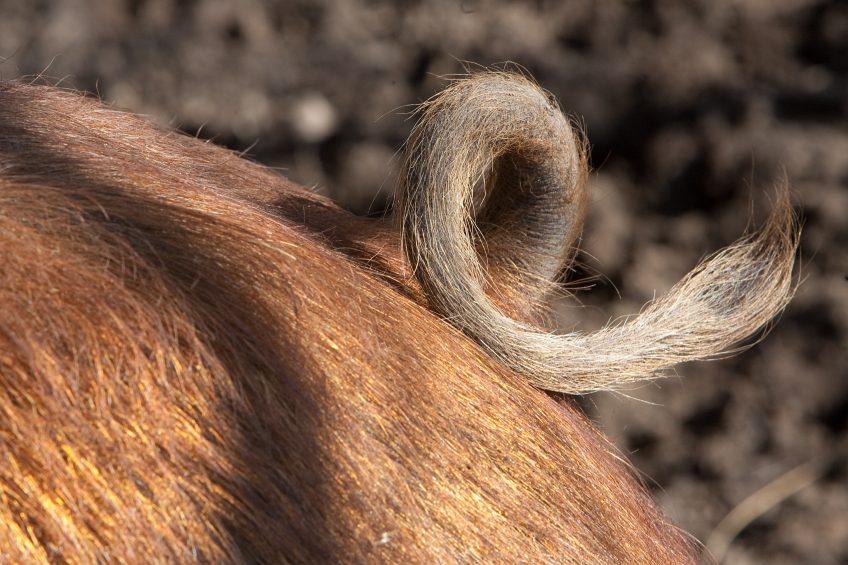German curly pig tail project into next phase

A German practical trial project to encourage keeping pig tails entire on-farm is soon going into the next phase. First results are moderately optimistic.
Just under 100 pig farmers joined the initiative called ‘Project Ringelschwanz’ (Curly Tail Project). The project was held on farms in the German state of Lower Saxony.
Although the pig producers involved have gained loads of experience, it’s too early to celebrate, stakeholders in Lower Saxony reported to Boerderij, a sister title to Pig Progress.
Pig tail project looks positive
Christian Meyer is the Lower Saxony’s minister of Food, Agriculture, Consumer Protection and State Development. The politician, member of an environmentalist green party, is the driving force behind the project. He presented the first outcomes at a press conference late 2016.
Calling the project ‘positive’ so far, he said: “Results show that not only organic, but also conventional pig farms succeed to prevent tail biting in pig houses when aiming for more animal welfare.”
No standard recipe for tail biting
Pig producers’ organisation ISN reacted slightly more conservatively. Chairman Heinrich Dierkes responded that the prevention of tail biting without tail docking continues to be difficult as it’s a matter for which no standard recipe is available.
Nevertheless, Dierkes said, “We made steps on our journey towards a habit of no-docking. Before we can completely get rid of tail docking, however, there’s a lot more work to be done.” One lesson learnt from this year is that pig producers ought to start with groups as small as possible and then proceed bit by bit.
Figures of pig tail biting project
Between December 1, 2015 and November 30, 2016, in total 86 pig farms with a total of 81,000 finisher pigs, managed to obtain a premium of €16.50 per finished pig with entire tails. Of these farms, 54 were conventional pig farms, combining a total of 58,000 finisher pigs.
In addition, 13 farms (9,200 finisher pigs) were involved in animal welfare chain Neuland and another 19 (13,500 finisher pigs) worked completely organic. In total 5 pig farms did not manage to obtain the premium as they did not manage to keep the tails entire in a satisfactory way.
Relatively low numbers of pig farms
The Lower Saxony farmers’ organisation Landvolk reacted that it’s too early to draw any decent conclusions on the basis of these figures. In total Lower Saxony holds 6,000 pig farms, so the number of participating farms is relatively low.
A guarantee for success for the other 5,900 cannot be given, said Hermann Wester, chairman of Landvolk’s pig production committee. Distorting the view he said is the fact that only finisher pig producers were involved. It’s also important that experiences are being obtained from piglet production. He said, “It doesn’t make much sense yet if sow breeders deliver piglets with entire tails when it’s unclear whether they’ll make it to the end as finisher pig with entire tail. Apart from that, the premium is too low.”
Sow farms also included
Minister Meyer has reacted positively to the idea of involving sow breeders in the project. He aims to have premiums in the second phase of the project for both piglets as sows. In total 156 farms with 207,000 pigs have signed up for the second phase – at least double the amount of pigs shall be involved now.
 Beheer
Beheer






 WP Admin
WP Admin  Bewerk bericht
Bewerk bericht